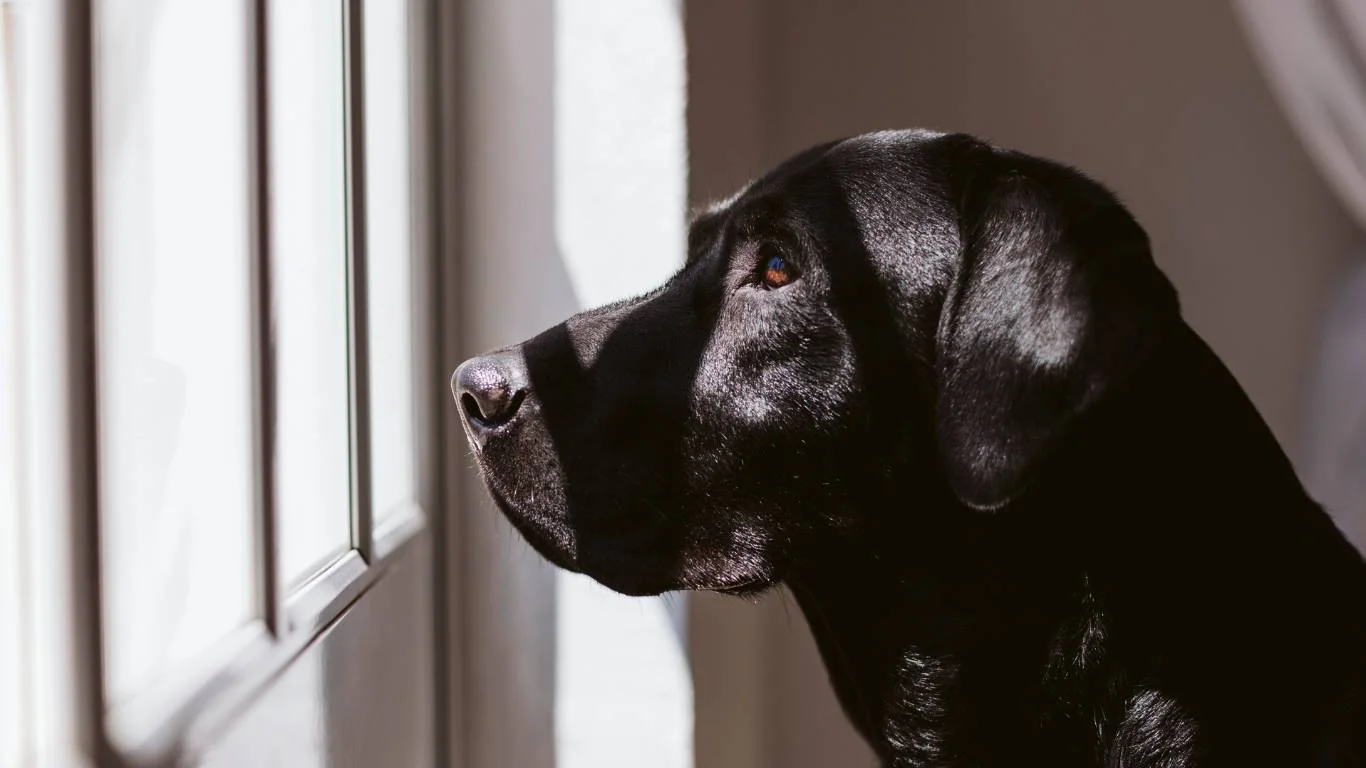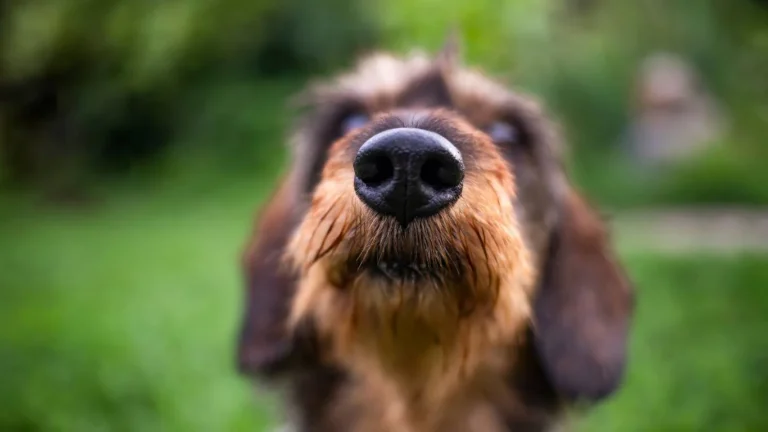What to Do If Your Dog Has Pink Gums: Vital Signs You Can’t Ignore
If you’ve ever peeked inside your dog’s mouth and noticed their gums are pink, you might have wondered, “Is this normal? Or should I be worried?” Well, that’s a really good question because pink gums in dogs can mean a variety of things, ranging from completely healthy to a sign that something’s off. As a Veterinary Assistant with a special focus on nutrition, I’ve seen firsthand how crucial it is to understand what those subtle changes in your dog’s gums might indicate. Today, I’m going to walk you through what to do if your dog has pink gums, how to tell when it’s normal, and when it’s time to act fast.
Understanding What Pink Gums Mean in Dogs

Pink gums are often a good sign in dogs. They usually indicate proper blood circulation and good oxygenation. In my experience assisting vets and working closely with pet owners, I’ve learned that healthy gums tend to be a bright, bubblegum pink color, moist, and smooth. But here’s the kicker: not all pink gums are created equal.
Sometimes, gums that are very pale pink or even too bright can hint at an underlying issue. For example, pale pink gums might suggest anemia or poor blood circulation. On the flip side, overly bright or red gums can be a sign of inflammation or infection. So, it’s not just the pinkness but also the texture, moisture level, and overall appearance that matter.
What Causes Pink Gums in Dogs?
Pink gums in dogs can be due to:
- Normal health: Most healthy dogs have pink gums.
- Increased blood flow: After exercise or excitement, gums can become more flushed.
- Dehydration or heat stress: Sometimes gums may look different due to changes in hydration.
- Early signs of illness: Certain diseases can initially present with changes in gum color.
In my time working in clinics, I’ve often seen anxious pet parents come in because their dog’s gums looked “different” after a walk or playtime. Usually, this was nothing serious — just the body responding to activity. But I always recommend keeping a close eye just in case.
How to Check Your Dog’s Gums Properly

Knowing how to check your dog’s gums at home is a simple but valuable skill. Here’s how I usually explain it to pet owners:
- Get your dog comfortable: Find a calm moment when your dog is relaxed.
- Lift their lip gently: Use your fingers to lift the upper lip and expose the gums.
- Look for the color and texture: Healthy gums should be pink, moist, and smooth.
- Do the capillary refill test: Press your finger gently on the gum until it turns white, then release and time how fast the pink color returns. It should be less than 2 seconds.
This simple test can give you immediate clues about your dog’s circulatory health. If the gums remain pale or take too long to regain color, that’s a sign to call your vet right away.
Signs to Watch for When You See Pink Gums
Not all pink gums mean everything is fine. Here’s what to keep an eye on:
- Dryness or stickiness: Gums should be moist. Dry gums might mean dehydration.
- Unusual spots or discolorations: White, blue, or bright red spots can be red flags.
- Swelling or bleeding: This could indicate infection or trauma.
- Changes in behavior: Lethargy, weakness, or excessive panting along with gum changes should be taken seriously.
From my personal experience, it’s always better to err on the side of caution. If your dog’s pink gums look “off” to you or if they’re showing other symptoms, don’t hesitate to get a professional opinion. Often, early detection means easier treatment and a faster recovery.
When Pink Gums Are a Warning Sign

Now here’s where things get real — because while pink gums can be a totally normal thing, sometimes they’re actually your dog’s way of waving a red flag. I remember this sweet Golden Retriever that came into the clinic I worked at a few years ago. Her owner noticed her gums were an unusually pale pink — almost white — and she’d been acting more tired than usual. Turns out she was anemic due to a tick-borne disease. It was a good thing her human caught it early.
So, what are the signs that something could be wrong? Let’s break it down:
- Gums are pale pink or white: This can be a sign of blood loss, anemia, or shock.
- Bright or inflamed pink/red gums: Often linked to dental disease, gingivitis, or overheating.
- Sticky or dry pink gums: Could signal dehydration or fever.
- Fast breathing or heavy panting with pink gums: Might mean heatstroke or anxiety, but always worth checking.
When I see gums that just don’t look right, I always ask a few questions: Has the dog been eating and drinking normally? Are they acting themselves? Any recent injuries or illnesses? That context is super helpful and something you can bring to your vet if you notice a change in your dog’s gums.
What to Do If Your Dog Has Pink Gums and You’re Unsure

If your pup’s pink gums are making you nervous, you’re not alone. I’ve talked to dozens of pet parents in the exam room who were worried but unsure if it was worth the trip. Here’s what I usually recommend as a starting point:
- Do a full body check: Gently feel their body for lumps, wounds, or areas of sensitivity.
- Monitor behavior: Is your dog eating, drinking, playing, and acting like themselves?
- Check for other symptoms: Vomiting, diarrhea, coughing, lethargy — these paired with gum changes can be big clues.
- Take pictures: Snapping a photo of the gums can help track changes and give your vet something to reference.
One trick I’ve shared with a lot of clients is to get familiar with what your dog’s *normal* looks like. That way, any variation is easier to spot. I even suggest checking their gums once a month during brushing or grooming. It’s a simple habit that can make a huge difference.
When to Call the Vet Right Away
Not every change in gum color is an emergency, but some definitely are. If you notice any of the following along with unusual pink gum appearance, don’t wait:
- Your dog is weak, dizzy, or collapses
- There’s visible bleeding or trauma in the mouth
- The gums are pale, blue, or white
- They have difficulty breathing
- Persistent vomiting or diarrhea with gum changes
Trust me — your vet would *much rather* see your dog and find out it’s nothing serious than wait and risk it being something that gets worse quickly. I’ve seen scary cases that turned out fine, and others that became emergencies fast because treatment was delayed.
The Role of Nutrition in Gum Health

This is where my nutrition background really comes in handy. Believe it or not, what your dog eats has a huge impact on their oral and gum health. Poor-quality diets can lead to inflammation, tartar buildup, and even immune issues — all of which can mess with the appearance and health of the gums.
I always tell pet parents to look for diets that include:
- Whole food ingredients: Things you can recognize like chicken, salmon, or sweet potatoes.
- Omega-3 fatty acids: These help fight inflammation and support overall health, including gums.
- Antioxidants: Ingredients like blueberries and spinach are great for immune support.
- Proper vitamins & minerals: Especially iron, zinc, and B vitamins which can influence gum color and health.
And of course, don’t forget the value of dental treats and toys that promote natural chewing. Chewing helps stimulate the gums and keep blood flowing. Just make sure they’re vet-approved and appropriate for your dog’s size and chewing style.
Supplements for Gum and Dental Support
Some pups need a little extra help beyond just food. In those cases, I’ve seen great results with:
- Probiotics: Helps with gut health, which surprisingly connects to oral health.
- CoQ10: Supports gum tissue and cardiovascular function.
- Chlorophyll or parsley supplements: Naturally freshens breath and supports healthy gums.
If your dog has recurring gum issues, it’s worth chatting with your vet about the right supplements. There’s no one-size-fits-all, but I’ve seen dogs do a complete 180 with the right mix of nutrition and daily care.
How Regular Dental Care Impacts Gum Health

Alright, let’s talk about one of the most overlooked (but seriously important) parts of keeping your dog’s gums in tip-top shape — dental care. I can’t even count how many times I’ve had pet parents look surprised when I ask, “Do you brush your dog’s teeth?” And hey, I get it. Life’s busy. But keeping up with your dog’s oral hygiene can make a night-and-day difference when it comes to those pink gums.
Daily brushing is ideal, but even just a few times a week can help reduce plaque and tartar that can lead to red, irritated, or even bleeding gums. If brushing isn’t in the cards, consider:
- Dental wipes: Super quick and easy to use, especially for squirmy pups.
- Water additives: These can help reduce bacteria buildup and freshen breath.
- Vet-recommended dental chews: Some of these are actually effective at scraping off plaque while keeping dogs entertained.
- Routine dental cleanings: A professional cleaning at the vet may be needed annually or bi-annually, depending on the dog.
One of the senior labs I worked with had chronic gingivitis, and once his owner committed to a routine using dental gel and a monthly cleaning schedule, his gum color improved dramatically. It’s wild how much oral health ties into your dog’s overall wellness!
Breed and Age: How They Affect Gum Color

Another thing to keep in mind: not every dog’s “normal” is the same. Some breeds have darker pigmentation in their gums — think Chows, Shar Peis, and some Pit Bulls. Their gums might appear spotted or even have dark patches that are completely natural.
In contrast, older dogs often show more visible signs of wear in their mouths. You might see some receding gumlines, or even a shift in coloration with age. That doesn’t automatically mean something’s wrong, but it’s worth keeping tabs on. I’ve had regular clients bring their senior pups in just to double-check these kinds of changes, and often, a vet’s confirmation offers huge peace of mind.
Know Your Dog’s Baseline
One of the best pieces of advice I ever got from a seasoned vet I worked with was this: “Know what’s normal for your dog before something goes wrong.” That means:
- Check their gum color regularly.
- Take notes (even a quick phone pic can be a great reference).
- Track their energy, appetite, and hydration.
It’s easier to spot something weird when you’re familiar with what your pup looks and acts like on a healthy day.
So, What to Do If Your Dog Has Pink Gums?
Let’s pull it together. If your dog has pink gums and seems fine — eating well, playing, full of energy — chances are everything’s okay. But if those pink gums suddenly look pale, dry, inflamed, or paired with other unusual signs, it’s time to take action. Always trust your gut. You know your dog better than anyone.
And if you’re unsure? Snap a photo, jot down any behavior changes, and give your vet a call. Even a short phone consult can rule things out or help you know if you need to bring your dog in. I always tell pet parents: when in doubt, check it out. It’s better to ask than to wish you had.
Quick Recap: What to Do if Your Dog Has Pink Gums
- Check for texture (should be moist, not sticky or dry)
- Look at behavior changes
- Perform the capillary refill test
- Rule out breed-related pigmentation
- Track any other symptoms (vomiting, fatigue, fast breathing)
- When in doubt — call your vet
References
Disclaimer
This article is for informational purposes only and should not be used as a substitute for professional veterinary advice, diagnosis, or treatment. If your pet is showing signs of illness, discomfort, or abnormal gum color, please consult your veterinarian immediately.






